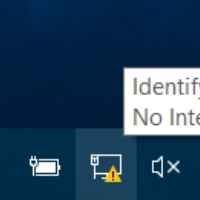How to guard against one of the most simple forms of hacking.–PC Pitstop.
Brute Force Attack Prevention & Protection
by The Windows Club
Brute Force Attack Prevention & Protection
Since no special logic is applied in brute force attacks except for trying out different combinations of characters used for creation of a password, prevention on a very basic level, is relatively easy.
Apart from using a fully updated Windows operating system and security software, you should use a strong password that has some of the following characteristics:
1. At least one upper case letter
2. At least one digit
3. At least one special character
4. The password should be minimum of 8-10 characters
5. ASCII characters, if you wish.
The lengthier a password is, the more time it will take to crack the password. If your password is something like ‘PA$$w0rd”, it will take more than a 100 years to crack it with currently available brute force attack apps. Please do not use the suggested password in example, as it is very easy to break it using some intelligent software that falls out of the realm of brute force attacks.
Our freeware PassBox is a handy little tool that will remember all your passwords and even generate strong passwords for your account – or you could use some free online password generator to create strong passwords anonymously. Having done that, test your new password with Microsoft’s Password Checker. The Password Checker evaluates your password’s strength as you type.
If you are using WordPress website software, then there are also many WordPress security plugins that automatically block brute force attacks. Using a web firewall like Sucuri or Cloudflare is another option you can consider. One way to block brute-force attacks is to lock out accounts after a defined number of failed password attempts. The Limit Logins WordPress plugin is good for stopping brute force attacks on your blog. Other measures include allowing logins from only select IP addresses, changing default login URLs to something else and using Captcha’s to harden your WordPress blog security.



